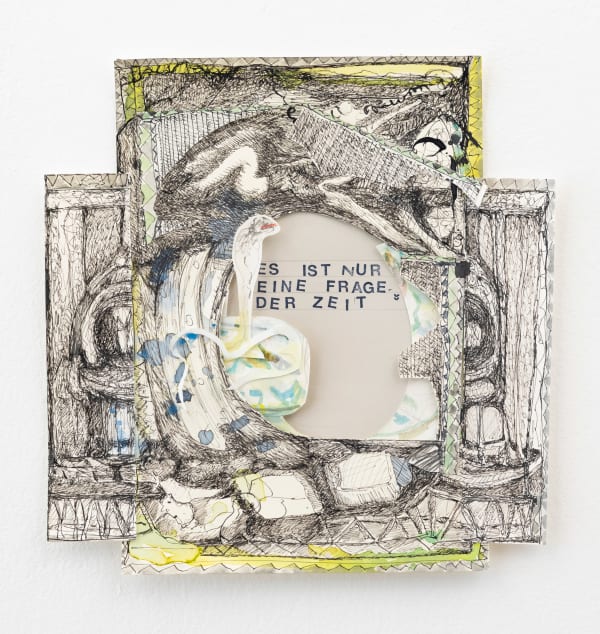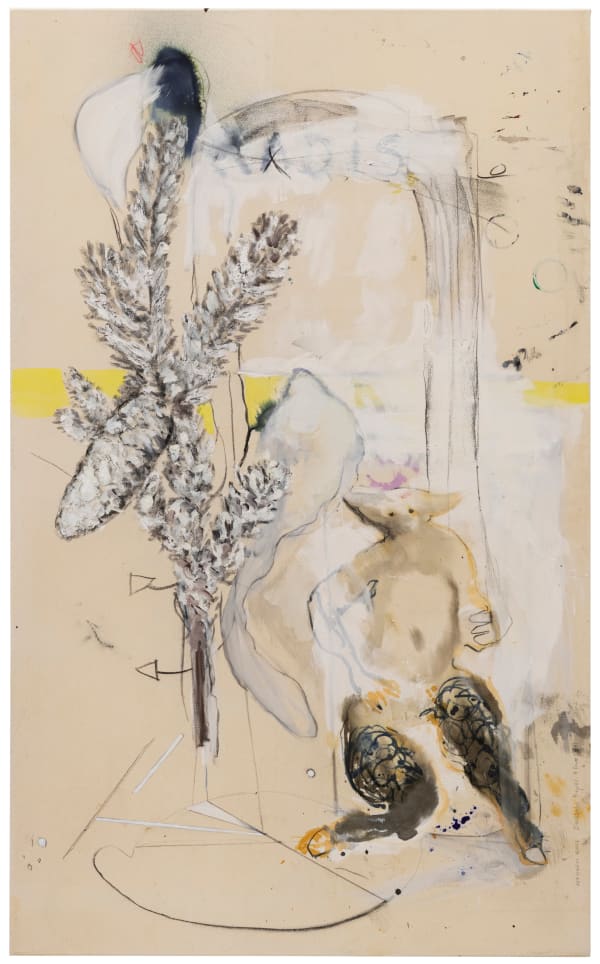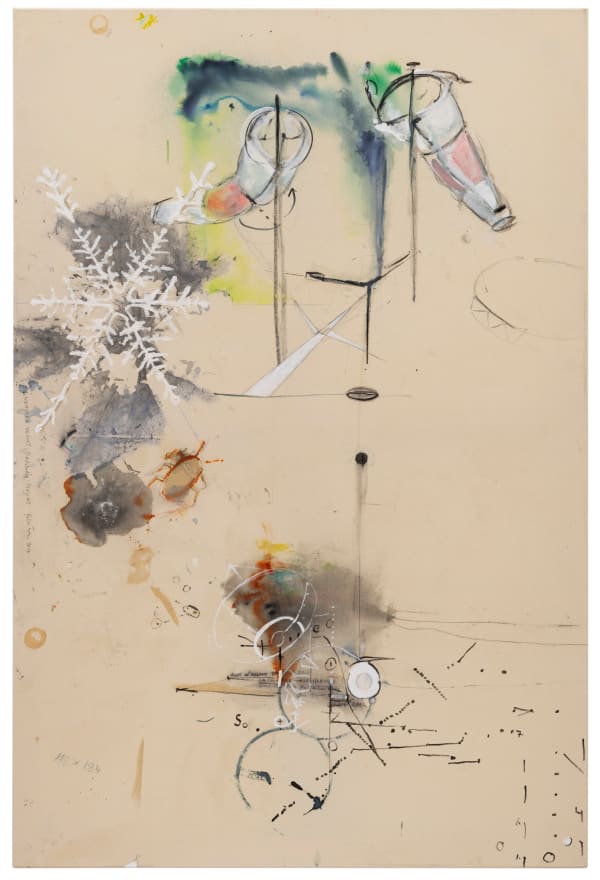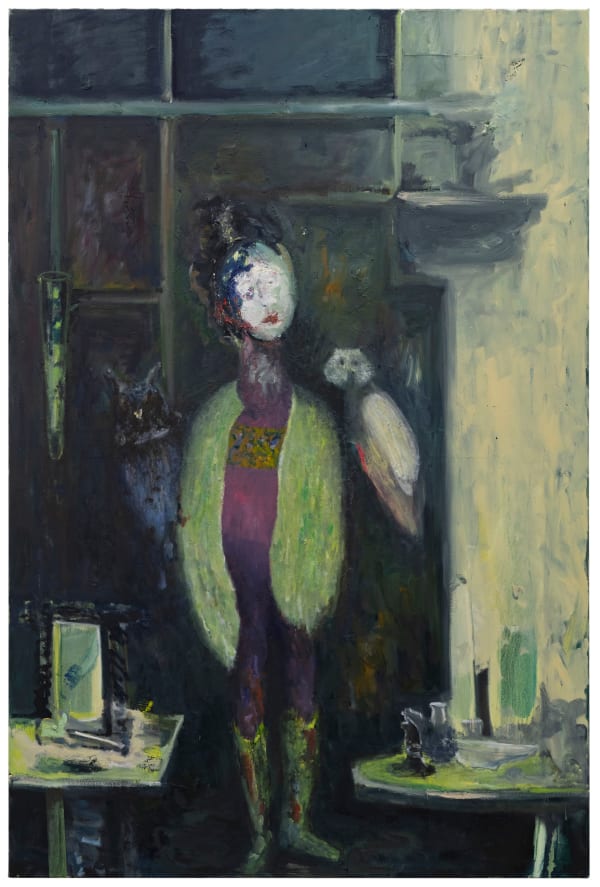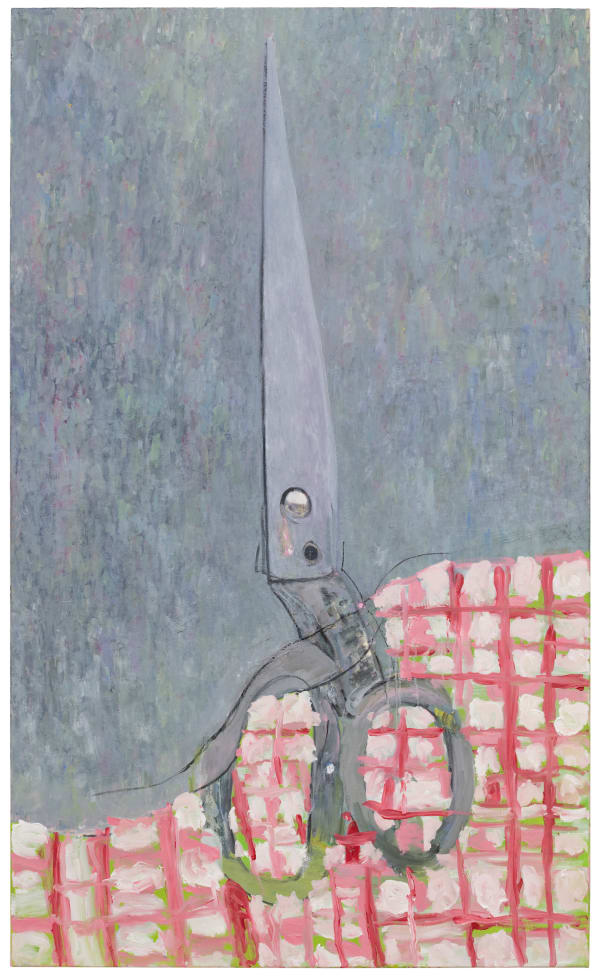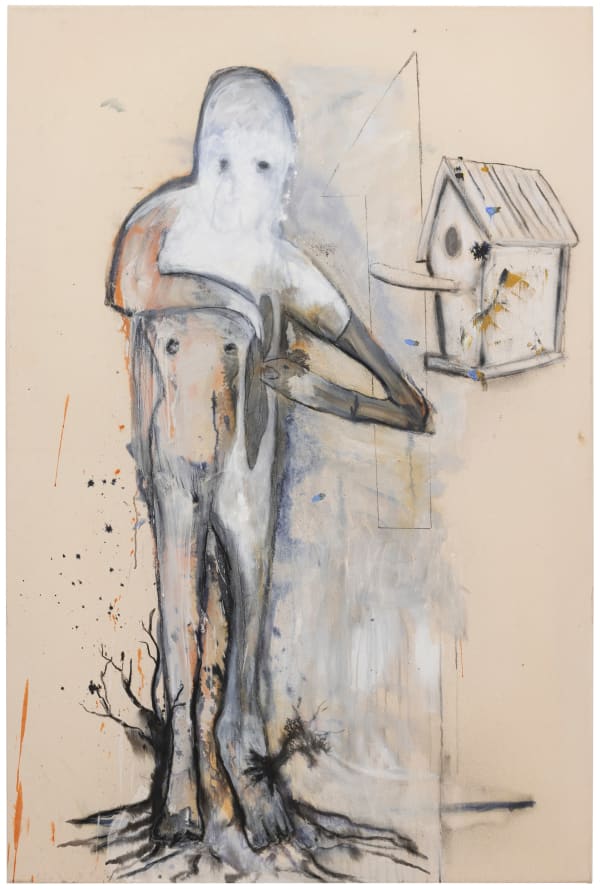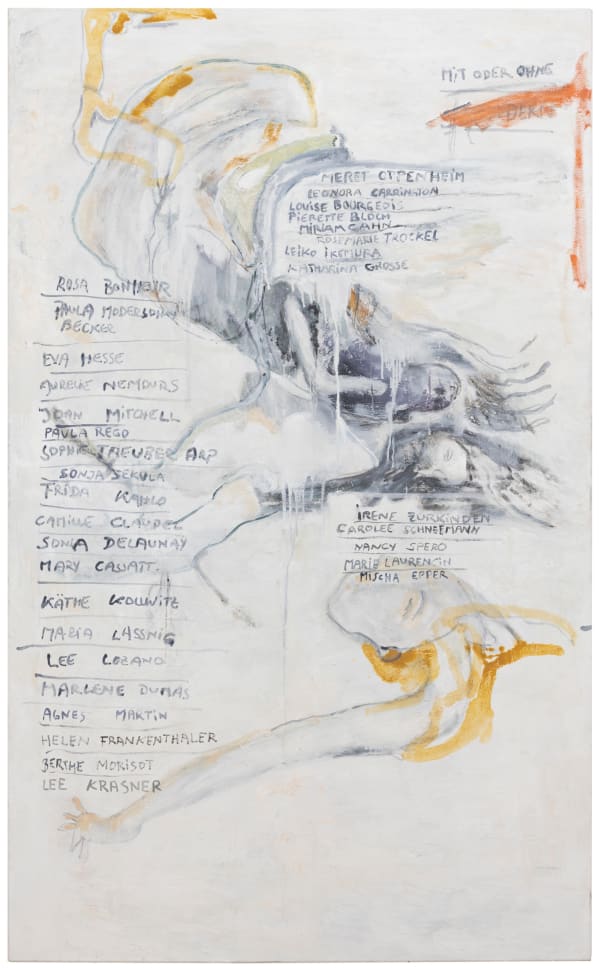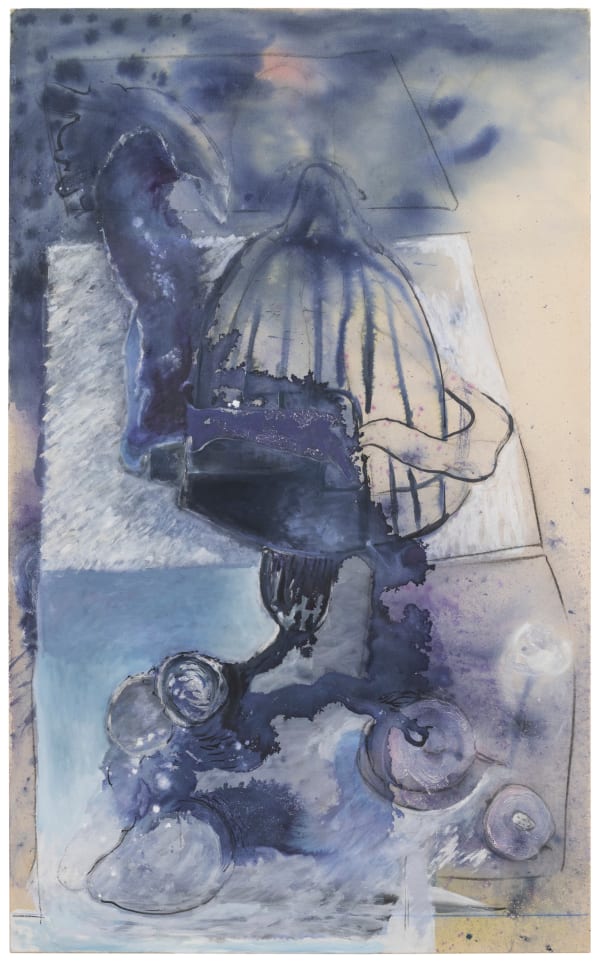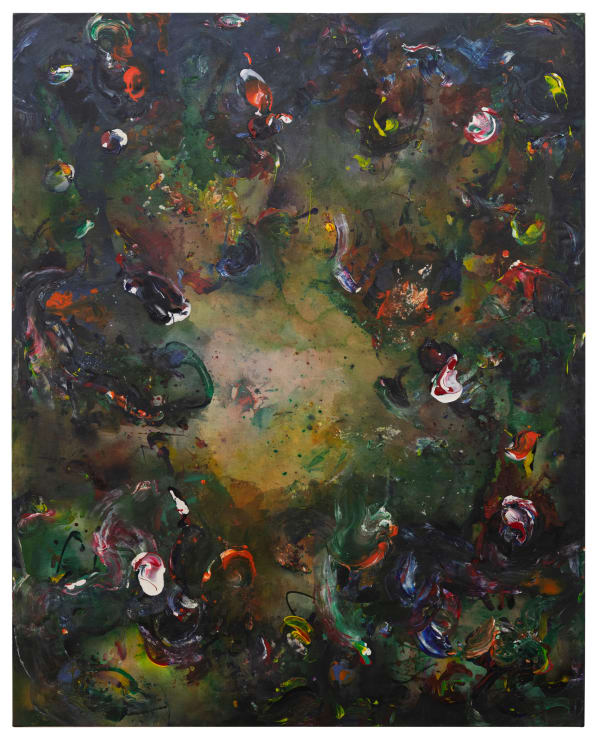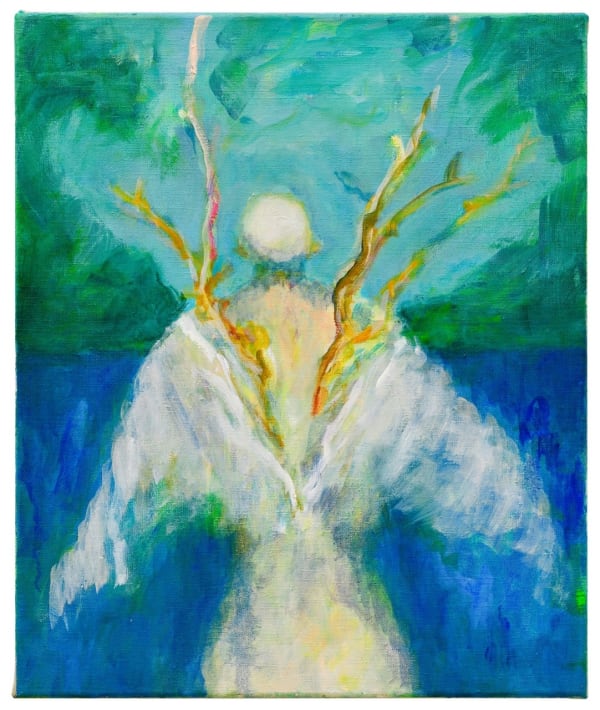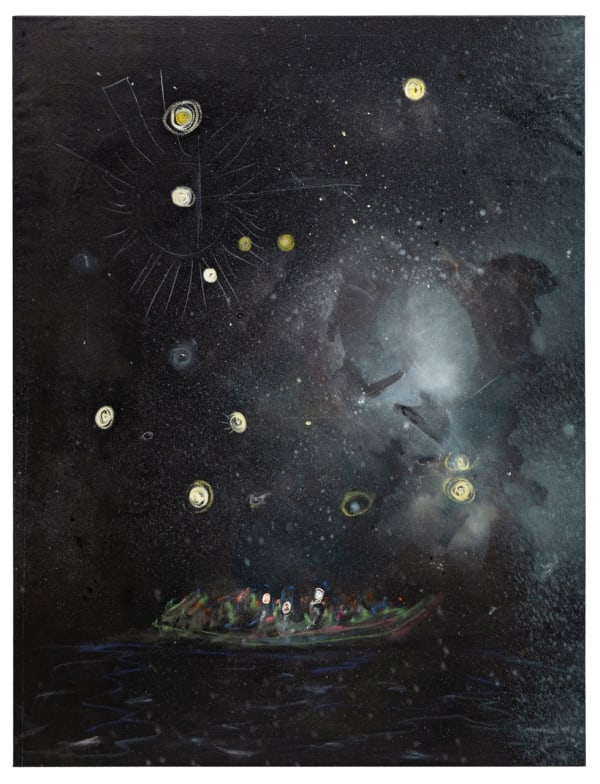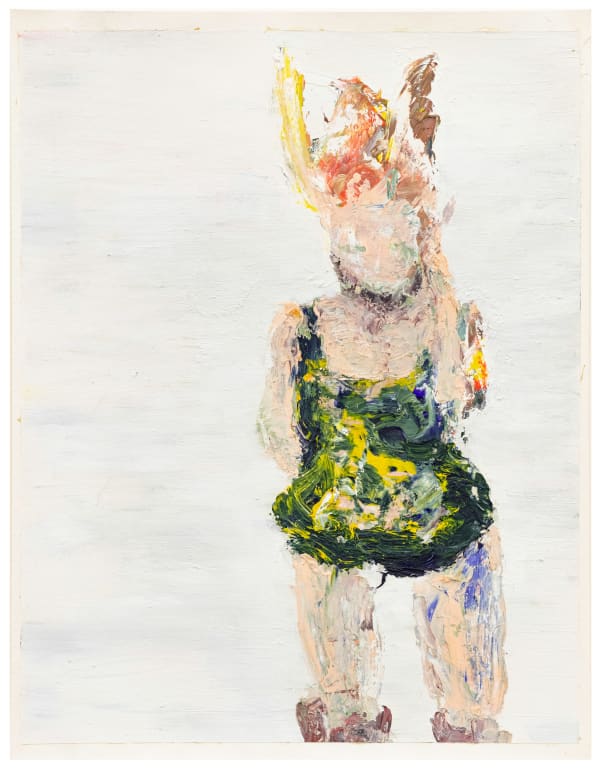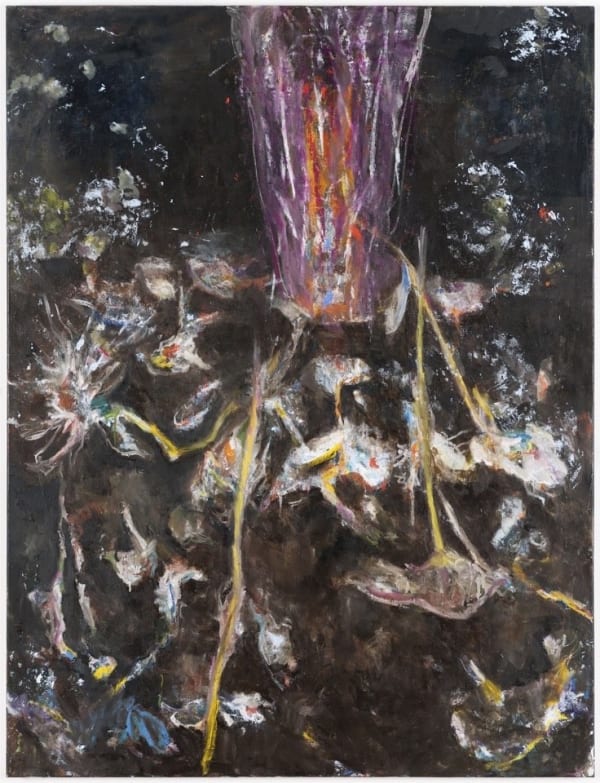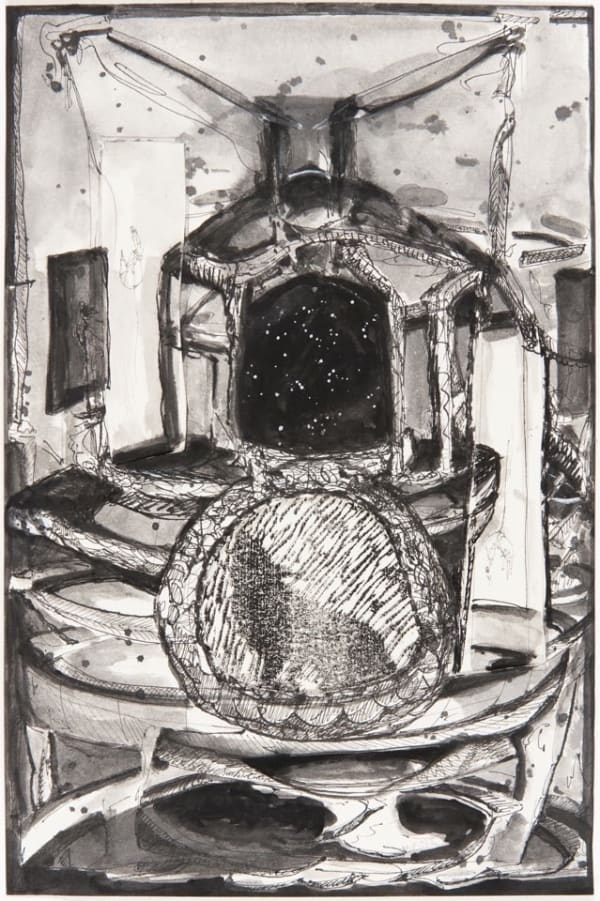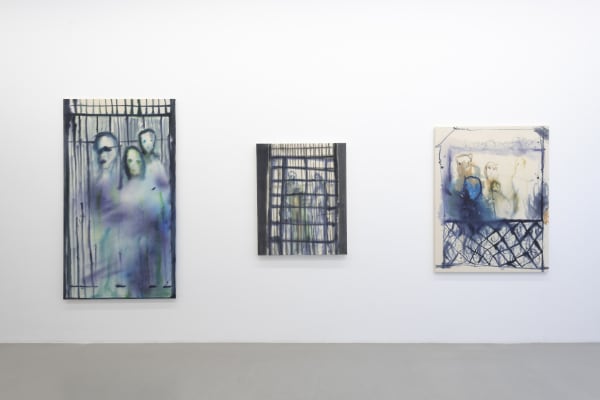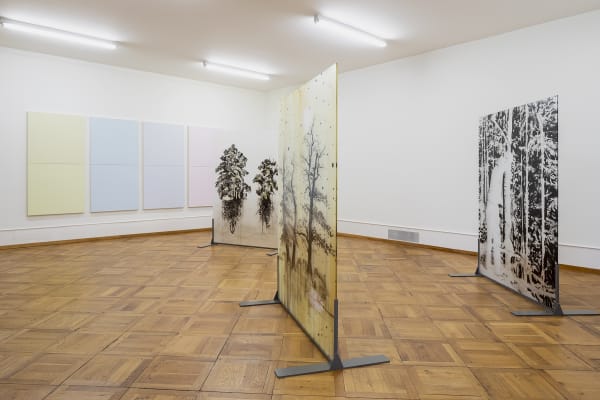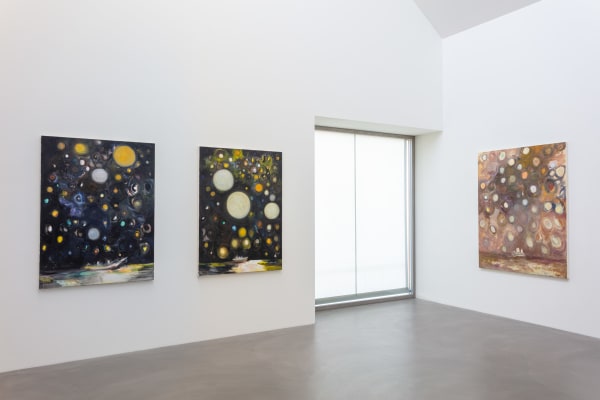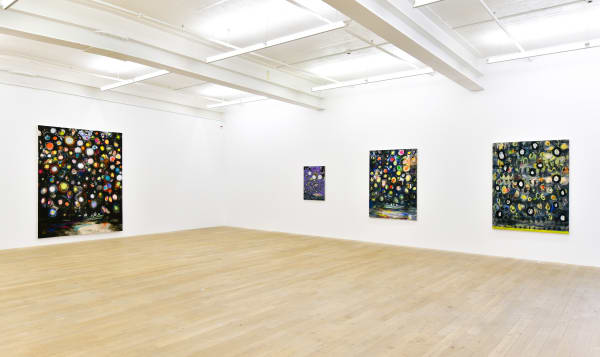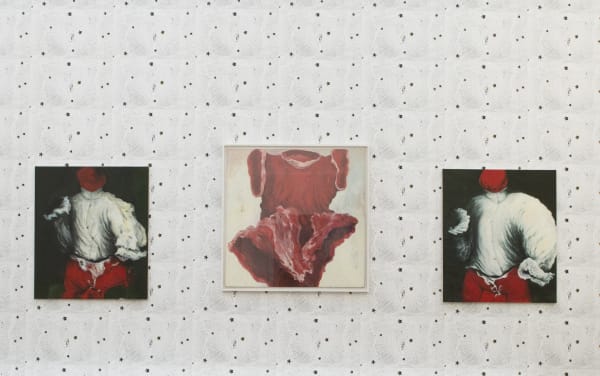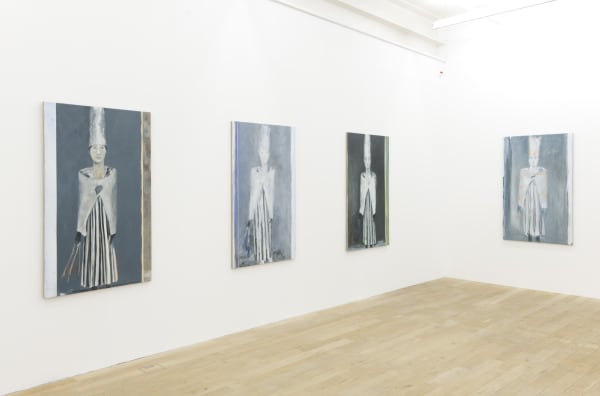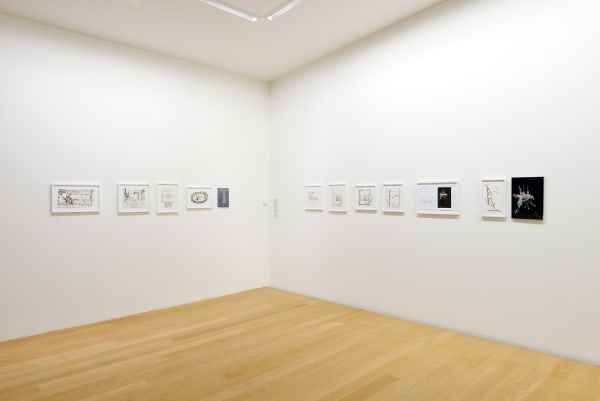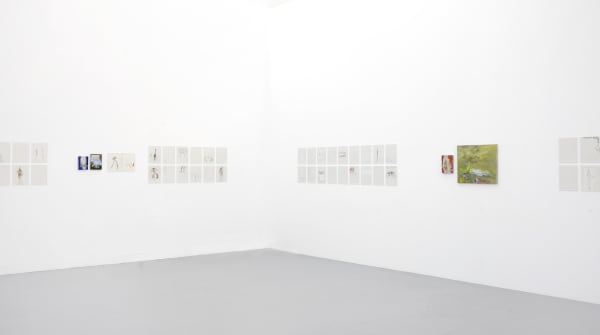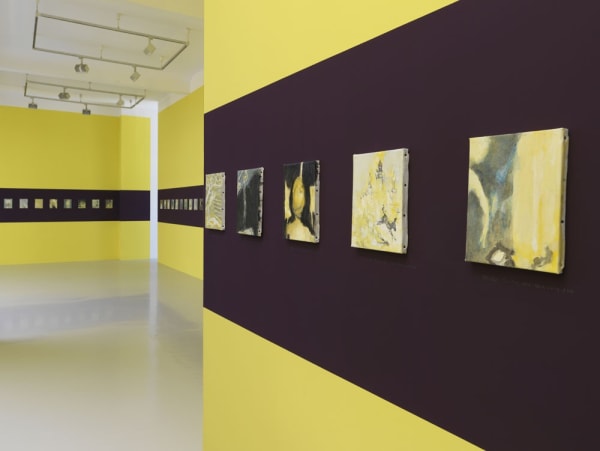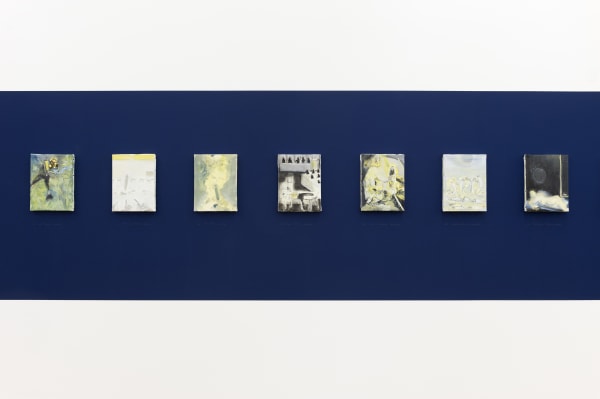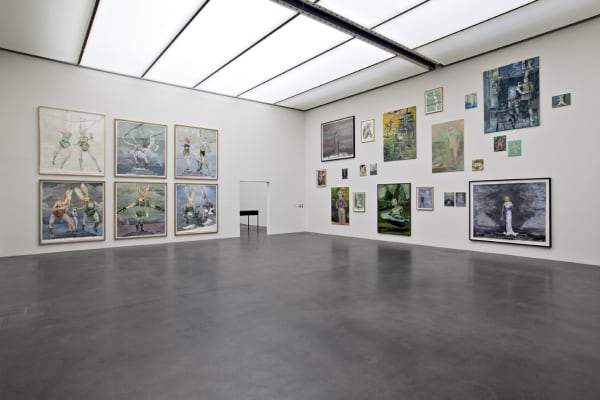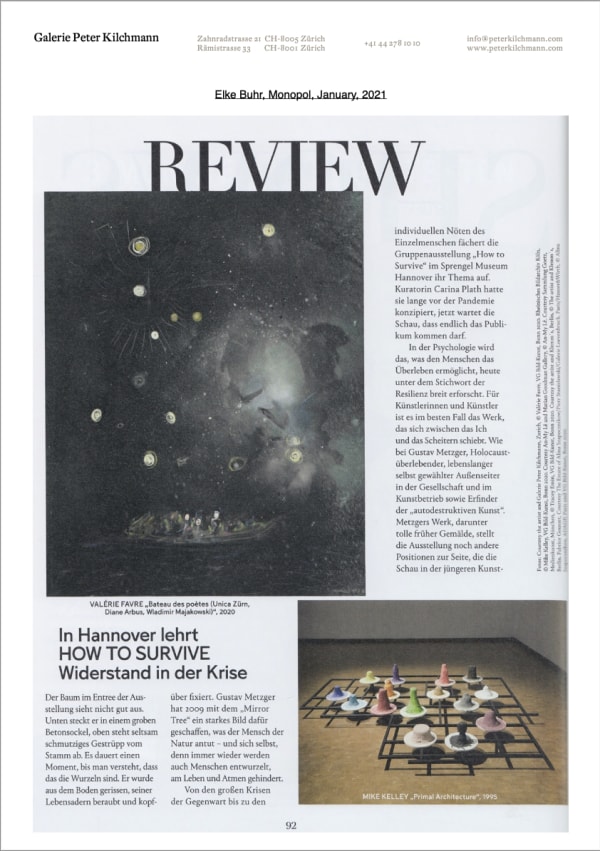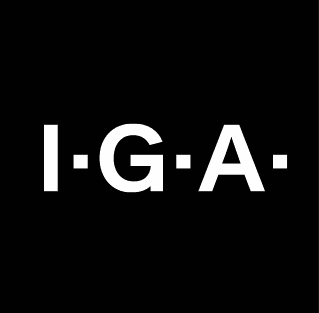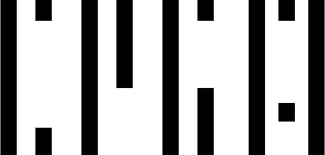Favre understands painting to be its own language, and it is the disruption that happens at the point of translation from idea to form that drives her artistic practice. She paints without preliminary sketches. She lays out her setting and then puts in the individual figures, which she is constantly correcting. The great narrative power and aura of her paintings result from its teeming composition, its imaginative richness and expressive treatment of the paint (colours, drips, impasto, accidents).
Valérie Favre (born in 1959, Evilard, Switzerland, lives and works in Berlin, Germany and Neuchâtel, Switzeralnd), initially pursued a career in theater after completing her training in the early 1980s, before fully dedicating herself to painting. Since 2006, she has been teaching painting at the UDK University of the Arts in Berlin.
Valérie Favre's oeuvre has been exhibited internationally since the late 1980s. Solo exhibitions have been showcased among others in the following institutions: Kulturhaus Helferei, Zurich, (2021), Galerie Pankow, Berlin, (2020); Neue Galerie, Gladbeck (2018); Musée d'art et d'histoire, Neuchâtel, Switzerland (2017); Von der Heydt Museum, Wuppertal (2016); Museum Franz Gertsch, Burgdorf (2016); Musée d'art moderne et contemporain, Strasbourg (2015); Neuer Berliner Kunstverein, Berlin (2013); Kunstmuseum Luzern (2009) and Carré d'Art - Musée d'Art Contemporain, Nîmes (2009).
Works by Favre will be on display from September 2025 in the group exhibition "Elles font la Figuration", Musée de Pully, Pully. Favre has participated in the following group exhibitions: Philara Collection, Düsseldorf (2024); Kunsthaus Grenchen; Musée Jenisch, Vevey; Museo Villa dei Cedri, Bellinzona (all 2023); Centre Dürrenmatt, Neuchâtel (2022); the travelling exhibition ‘Diversity/United: Moscow. Berlin. Paris’, Palais de Tokyo, Paris; State Tretyakov Gallery, Moscow and Tempelhof Airport, Berlin (2021), Sprengel Museum, Hanover (2020-2021); MARTa Herford, Herford (2019); Aargauer Kunsthaus, Aarau (2018); Albertinum, Dresden (2016); Zentrum Paul Klee, Bern (2015); Hyogo Prefectural Museum of Art, Kôbe (2014); Museum of the Seam, Jerusalem (2012); Tel Aviv Museum of Art, Tel Aviv (2012); K21, Düsseldorf (2010) and Musée national d'Art moderne, Centre Georges Pompidou, Paris (2009). In 2012, Valérie Favre was nominated for the prestigious Prix Marcel Duchamp in France. In 2024, Favre was awarded the coveted Prix Meret Oppenheim, the Swiss Grand Prix in art for her work. She has been professor for painting at Berlin University of the Arts since 2006.
-
 Petits Théâtres de la Vie, 2025
Petits Théâtres de la Vie, 2025 -
 Les Métamorphoses, devenir étoile, 2025
Les Métamorphoses, devenir étoile, 2025 -
 Le Grand Verre ( d’or et d’argent ), 2025
Le Grand Verre ( d’or et d’argent ), 2025 -
 Ghost (nach Goyas Hexenflug), 2025
Ghost (nach Goyas Hexenflug), 2025 -
 Petit Théàtre de la vie "Es ist nur eine Frage der Zeit", 2025
Petit Théàtre de la vie "Es ist nur eine Frage der Zeit", 2025 -
 Heaven Gate, 2024
Heaven Gate, 2024 -
 Weather Report, 2024
Weather Report, 2024 -
 Archéologie de la mémoire, 2024
Archéologie de la mémoire, 2024 -
 Erinnerung Netz, 2024
Erinnerung Netz, 2024 -
 Knast, 2024
Knast, 2024 -
 Everything but also the birds, 2024
Everything but also the birds, 2024 -
 Schere, 2024
Schere, 2024 -
 La peau (Die Haut), 2024
La peau (Die Haut), 2024 -
 Mit oder ohne (En avoir ou pas), 2024
Mit oder ohne (En avoir ou pas), 2024 -
 L'ouverture rêve mécanique II, 2024
L'ouverture rêve mécanique II, 2024 -
 Balls and Tunnel, 2024
Balls and Tunnel, 2024 -
 Balls and Tunnels, 2023
Balls and Tunnels, 2023 -
 Bateau des poètes (Cesare Pavese, Georg Trakl), 2021
Bateau des poètes (Cesare Pavese, Georg Trakl), 2021 -
 Les rêves, 2020 - 2024
Les rêves, 2020 - 2024 -
 De cornes et de bois/ Hörner und Geweih, 2020
De cornes et de bois/ Hörner und Geweih, 2020 -
 Bateau des poètes (Unica Zürn, Diane Arbus, Wladimir Majakowski), 2020
Bateau des poètes (Unica Zürn, Diane Arbus, Wladimir Majakowski), 2020 -
 Schimären - Chimères - Bleibox, 2019-2021
Schimären - Chimères - Bleibox, 2019-2021 -
 Self-portrait after De Chirico, Le Vaticinateur, 1915 (female), 2017
Self-portrait after De Chirico, Le Vaticinateur, 1915 (female), 2017 -
 Balls and Tunnels, 2015
Balls and Tunnels, 2015 -
 Lapine Univers, 2013
Lapine Univers, 2013 -
 Das Bukett (La fragilité des fleurs), Nr. 3, 2012
Das Bukett (La fragilité des fleurs), Nr. 3, 2012 -
 Rotkäppchen (Variation), 2012
Rotkäppchen (Variation), 2012 -
 Lapine Univers, 2009
Lapine Univers, 2009 -
 Selbstmord (Suicide), 2008-2013
Selbstmord (Suicide), 2008-2013
-

Valérie Favre
Un billet pour quatre pièces11-13 rue des Arquebusiers, Paris
8 Nov - 19 Dec 2025Spanning four rooms, the show brings together around twenty works that interweave long-standing series with new, previously unseen pieces. Across them, hybrid figures, dreamlike landscapes, and enigmatic narratives unfold like...Read more -

Sculpture Today
With works by: Alÿs, Bajević, Caniaris, Los Carpinteros, Deplazes, Doherty, Favre, Hänsli, Ikemura, Leutenegger, Macchi, Modé, Shahbazi, Spichtig, William, Zmijewski
Zahnradstrasse 21, Zurich 4 Nov - 19 Dec 2025SCULPTURE TODAY Featuring works by Francis Alÿs, Maja Bajević, Vlassis Caniaris, Los Carpinteros, Andriu Deplazes, Willie Doherty, Valérie Favre, Christoph Hänsli, Leiko Ikemura, Zilla Leutenegger, Jorge Macchi, João Modé, Shirana...Read more -

Valérie Favre
Temps contre Temps, a taste of freedomGalerie Peter Kilchmann
Rämistrasse, Zurich
Book Launch: Saturday, October 19, 3 - 5 pm
30 Aug - 19 Oct 2024Valerie Favre Temps contre Temps, a taste of freedom August 30 - October 19, 2024 Rämistrasse 33, Zurich Book Launch: October 19, 3 – 5 pm at Rämistrasse 33, Zürich...Read more -

(Un)certain Ground
Centre Pasquart, Biel, Switzerland 3 Jul - 4 Sep 2022No other artistic medium has experienced so many positive as well as negative attributions as painting. No longer a dominant art form, it has nonetheless remained a key reference for...Read more -

Valérie Favre
RawKunst Museum Appenzell, Switzerland
3 Apr - 16 Oct 2022Read more -

Valérie Favre
Bateaux des poètesGalerie Peter Kilchmann, Zahnradstrasse, Zurich
11 Jun - 24 Jul 2021For Favre, painting is a language of its own that initiates a dialogue of imagination and visual sensations with the viewer. Like a poet or thinker, she inserts her 'words'...Read more -

Valérie Favre
Une exposition monographiqueMusée d'art et d'histoire, Neuchâtel, Switzerland
10 Dec 2017 - 17 Aug 2018La production de Valérie Favre reflète la force d’un imaginaire nourri de références constantes et déclarées à la géopolitique, au cinéma, à la littérature et à l’histoire de l’art, utilisées...Read more -

Valérie Favre
Make-upGalerie Peter Kilchmann, Zurich, Switzerland
25 Feb - 1 Apr 2017'Valérie Favre makes herself a cubist costume out of cardboard and has herself photographed. Based on this photograph, she paints a cycle of eight self-portraits. This is the first time...Read more -

Valérie Favre
Franz Gertsch Museum, Burgdorf. Switzerland 16 Apr - 14 Aug 2016Read more -

Valérie Favre
La Première Nuit du mondeMusée d'art moderne et contemporain, Strasbourg, France
25 Nov - 27 Mar 2015Valérie Favre returns to Strasbourg with an exhibition conceived around her latest work, a tribute to Maurice Blanchot inspired by her reading of Thomas l'obscur. Fascinated by this strange story,...Read more -

Valérie Favre
Selbstmord. SuicideNeuer Berliner Kunstverein, Berlin, Germany
8 Jun - 28 Jul 2013The second group of works still/leben (de la fragilité des fleurs n°5) (2013), which was created especially for the exhibition, consists of large-format canvases as well as a collection of...Read more -

Valérie Favre
PaintingsGalerie Peter Kilchmann, Zahnradstrasse, Zurich
18 Jan - 23 Feb 2013How can one die? Over the last ten years Valérie Favre has occupied herself with the motif of suicide and has created over one hundred small-format paintings on the subject...Read more -

Three Statements in Painting
Francis Alÿs, John Armleder, Valérie FavreGalerie Peter Kilchmann, Zahnradstrasse, Zurich
15 Apr - 28 May 2011With Francis Alÿs, John Armleder and Valérie Favre, Peter Kilchmann is pleased to present three artists who all also work in the medium of painting, yet have very singular positions....Read more -

Valérie Favre
VisionsKunstmuseum Luzern, Luzern, Switzerland
24 Oct 2009 - 7 Feb 2010Valérie Favre’s serial working method testifies to the significance of the media of literature, theatre and film to her work and, along with the violent painting, to an intense engagement...Read more
-
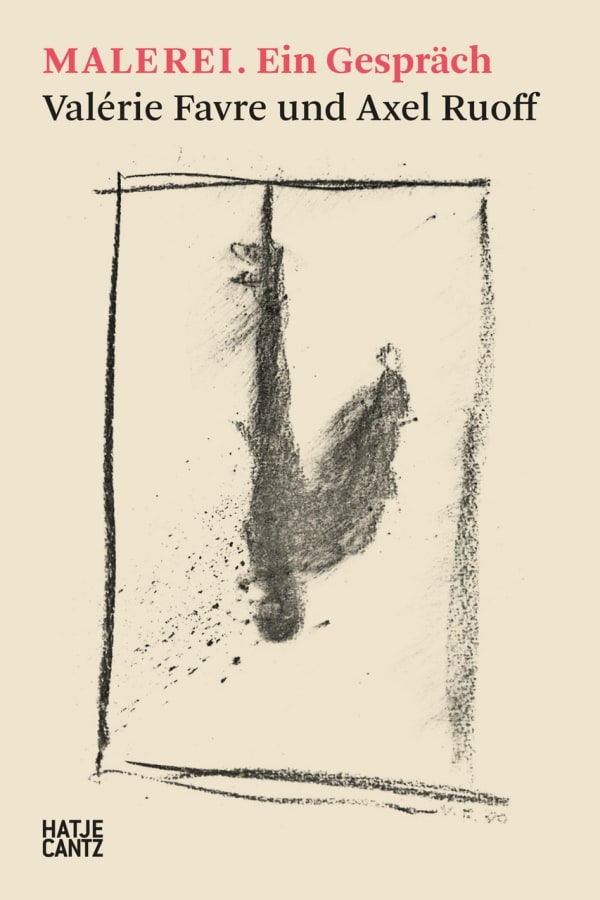
Valérie Favre
Malerei. Ein Gespräch, 2024 Valérie Favre and Axel Ruoff, 2024 Read more -
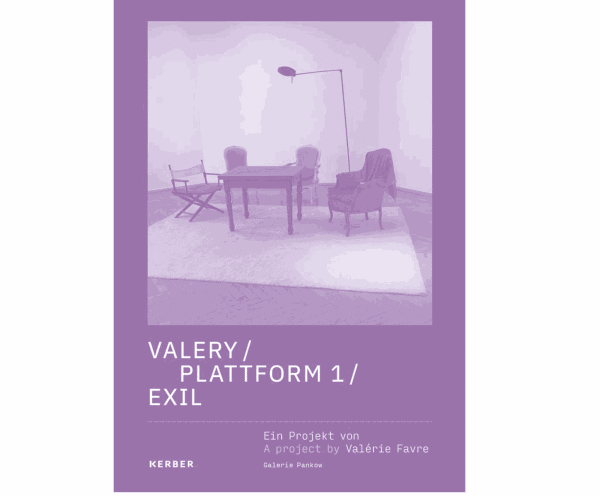
Valérie Favre
Valery/ Plattform 1 / Exil, 2021 Texts by Valerie Favre, Angela Lammert, Interview with Annette TietzGalerie Pankow, Berlin
Read more -
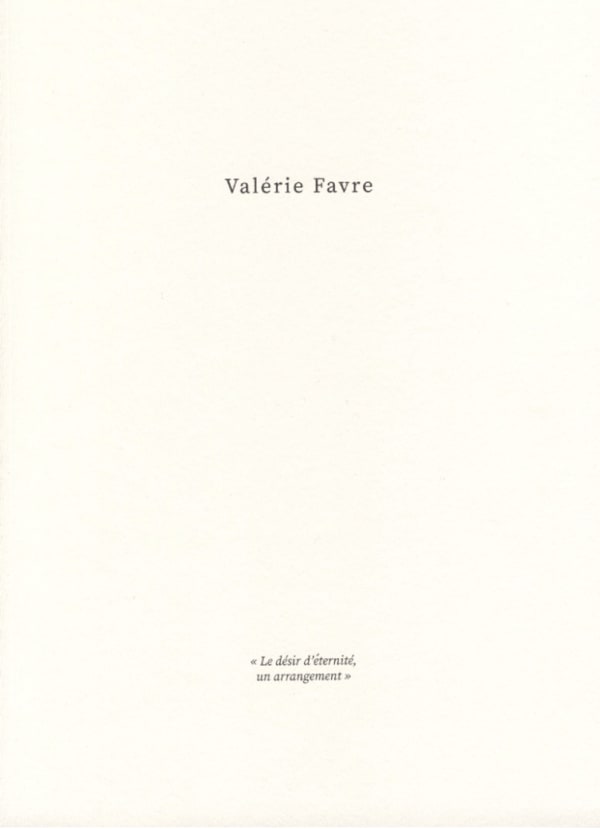
Valérie Favre
Le désir d'éternité, un arrangement, 2019 Thomas Hirsh, 2019 Read more -
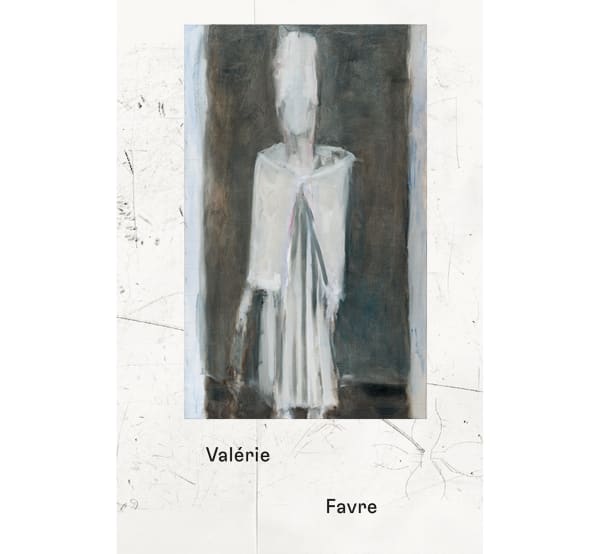
Valérie Favre
2017 Texts by Antonia Nessi, Peter Fischer, Alain Quemin, Sylviane Dupuis, Thomas FacchinettiMusée d’art et d’histoire, Neuchâtel
Read more -
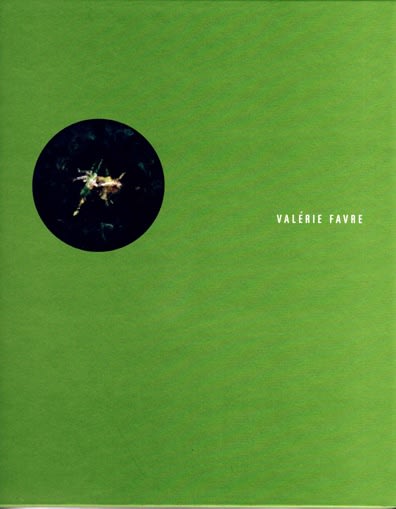
Valérie Favre
2016 Text by: Beate EickhoffVon der Heydt-Kunsthalle, Wuppertal
, 2016 Read more -
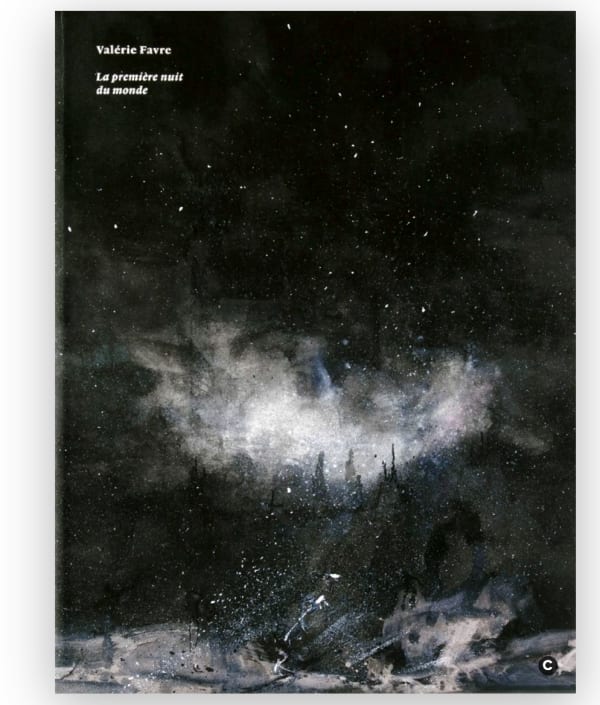
Valérie Favre
La première nuit du monde, 2015 Texts by Corine Pencenat, Daniel Payot and Heike Fühlbrugge, with an interview by Joëlle Pijaudier-Cabot and Estelle PietrzykMusée d'Art Moderne et Contemporain, Strasbourg
, 2015 Read more -
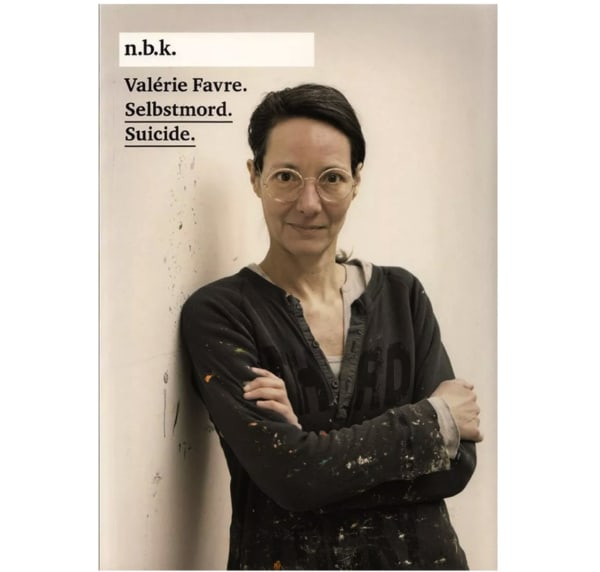
Valérie Favre
Selbstmord. Suicide, 2013 Texts by Marius Babias, Elisabeth BronfenN.B.K., Neuer Berliner Kunstverein, Berlin
, 2013 Read more -
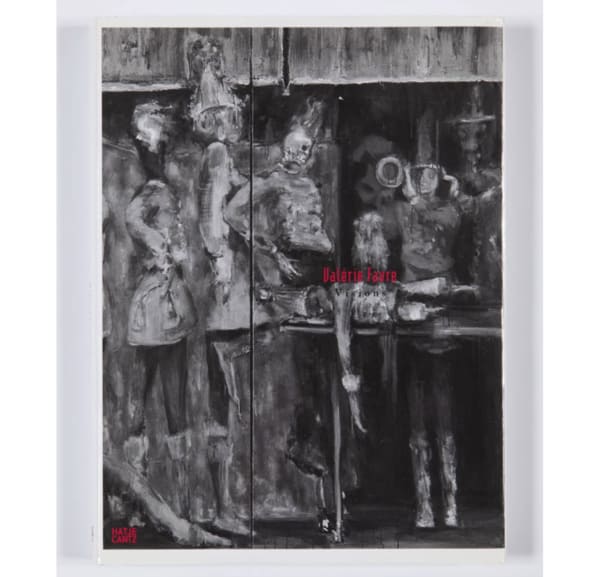
Valérie Favre
Visions, 2009 Texts by Beatrice von Bismarck, Claire Brunet, Françoise Cohen, Peter Fischer, Jürgen Harten und Jacqueline LichtensteinKunstmuseum Luzern, Carré d’Art Musée d’Art contemporain
, 2009 Read more -
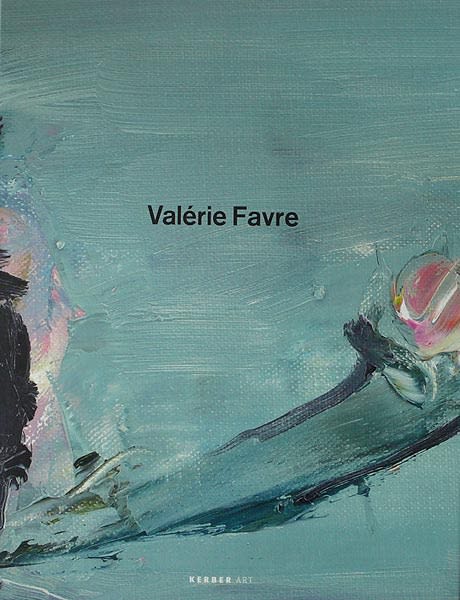
Valérie Favre
2008 Kunstverein Ulm, 2008 Read more





